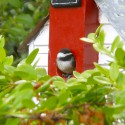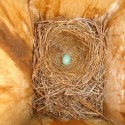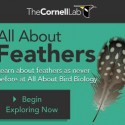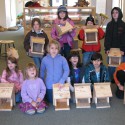 Photo ©
Keith Williams
Photo ©
Keith Williams

Spring Updates to Data Entry
We have recently updated the Data Entry form that NestWatchers use to submit nesting data. These changes will help prevent common mistakes and improve the online experience. Here is a look at what’s changing:
- Automatic saving means you never need to worry about losing your data. We’ll save your changes every 5 seconds.
- You will receive confirmation requests whenever the system detects potential mistakes. An example would be changing the species name. You should only change the species name if you made a mistake in selecting the species, not because another bird has taken over the nest. If another bird has taken over the nest, you should end the previous attempt record and begin a new one.
- When the system detects that you could be entering two nesting attempts on the same data form, you may be prompted to start a new nesting attempt record for the site. There is a check-box that allows you to select nest visits that need to be moved to a new attempt. You should use this if you have already entered two nest attempts (say, a bluebird followed by a swallow in the same box) on the same form. This also means that you can now edit multiple attempts at a site simultaneously.
- If you have a predator guard on your nest box, please tell us about it (optional for nest boxes only).
- For some of our most-monitored species, such as bluebirds and chickadees, we are seeking additional information. If you feed nesting bluebirds or chickadees, please tell us about it.
These changes are designed to address questions that will be of interest to NestWatchers, help participants enter the highest quality data possible, and alert you to any potential action(s) needed on your part. We are constantly working to make NestWatching fun and easy, and we welcome your feedback.

Do Birds Prefer to Lay Their First Egg on Saturdays?
Phenology is the science of when things occur, and accurate phenology data are important for understanding conservation needs, climate change, and even basic biology. For birds, timing of spring arrival or the first egg of the year can tell us if reproductive trends are changing over time. First egg date, as reported by NestWatchers, is a critically important variable in scientific analyses of the NestWatch data.
In a study by Caren Cooper, research associate at the Cornell Lab of Ornithology, an interesting finding came to light. Cooper found that 75% of attempts by cup-nesting species and 42% of attempts by box-nesting species were not visited by monitors during the egg-laying stage, resulting in a lack of information on first egg dates. Therefore, when possible, NestWatchers should try to visit the nest during the egg-laying stage. This is harder to do for species with small clutches such as hummingbirds and doves, which typically lay just two eggs. Watch for birds building nests—carrying grass, twigs, plant down, and other nesting material—and see where they go. By visiting newly-built nests every 3–4 days, you are more likely to determine first egg date for most species.
Cooper also found that nest monitors were most likely to visit nests on Saturdays and least likely to visit nests on Fridays, producing a bias in which birds appear to favor Saturday for laying their first eggs. Of course, birds do not know which day of the week it is, and we know that they are equally likely to lay an egg on Friday as they are on Saturday. Fortunately, researchers can correct for this “Saturday bias” statistically, provided the nest was checked at some point during egg-laying.
To address this bias, we’ve added a check-box in data entry that asks if the nest was visited during the egg-laying period (note: the question does not refer to whether you saw a bird laying an egg, only whether you visited during this stage of the nesting cycle). Answer the question to the best of your knowledge, and remember, answering “no” doesn’t mean we can’t use your data. The check-box will also remind you to go out and check nests when eggs are anticipated. The check-box is located under the field where “First Egg Date” is entered. (Remember, First Egg Date is when you think the first egg was laid, not when you first saw an egg.) It might seem more important to report the total clutch size, but keep in mind that when birds begin to lay can also be very informative.

Explore Feathers with New All About Bird Biology
The Cornell Lab has just released All About Bird Biology, a media-rich website that brings the fascinating world of birds to life in a fun and interactive way. Designed as an ever-expanding resource highlighting the best bird-related science stories, we started by exploring the colorful and surprising diversity of feathers.
You are among the first groups that we’ve alerted about this new site. Make sure to check out:
- the self-paced interactive feature All About Feathers;
- the vibrant video library, bringing you jaw dropping behavior from your feeder to far-flung forests;
- animated slides on feather biology in a free PowerPoint download.
As NestWatch enthusiasts, we think you’ll appreciate this opportunity to discover more about what’s really going on in the lives of birds.

Welcome a New Chapter!
Welcome to our newest NestWatch Chapter, Thacher Nature Center, located in Voorheesville, New York! Thacher Nature Center offers trainings for NestWatch volunteers, hosts “Build a Nest Box” workshops, and is adding a Northern Flicker nest box cam this year. Find a NestWatch Chapter near you or visit Thacher online to plan your visit.
Take Our Birdhouse Survey!
NestWatch wants to hear about your experience with birdhouses. We are hoping to collaborate with a manufacturer to put together make-your-own-birdhouse kits. If you would answer five questions in a brief survey, it would help us understand more about people’s interest in birdhouses (also called “nest boxes”). Thank you!